Home | Front Page | Index | Blog | New | Contact | Site Map
Arrival
Registering
First Steps
Kremlin
Dom Museums
Grand Museums
Statues
Churches
Monasteries
Metro
Markets
Radonezh Dacha
Maps
Foto Show
Other Russia
Russia
Golden Ring
St Petersburg

Travel 2005
Berlin
Paris
Moscow
Russia
Athens
Travel 2004
Mexico 2004
Belize
Guatemala
Honduras
Costa Rica
Panama
Colombia
Ecuador
Palaces of mosaics and marble with soviet realist statues and reliefs of communist heroes, No, we're not talking about the Kremlin but the stations of the Moscow Metro. Built as proof positive that Communism was more than a match for evil Capitalism, the Moscow Metro endures. It's by turns kitchy and drab but still impressive particularly in the quality of the materials that now fifty years old are only just beginning to show signs of wear.
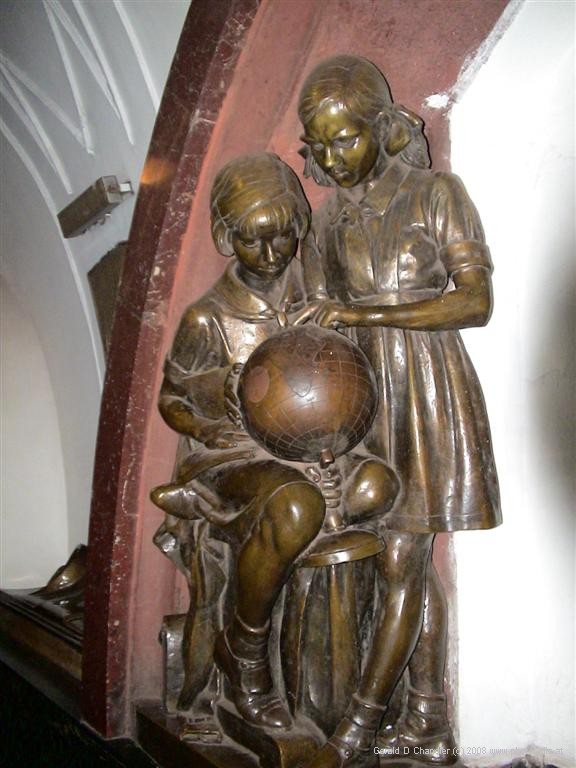
Metro statuary |

Metro wall decoration |
The station names were a kind of education in Soviet politics and history. Stations were named after organizations like the Komsomol, the Communist Youth movement, or famous poets like Mayakovsky. Some were locative, like Teatralnaya, which was just opposite the Bolshoi Theater. Others were for famous cities like the Kievskaya metro which was right in the mainline Kievskaya train station from which you could catch a train to Kiev.
Somewhat confusing for the newcomer was the habit of giving connecting stations on different lines different names. When three lines came together, there were three different stations each with a different name making navigating a bit difficult especially if you weren't familiar with the Cyrillic script. Trying to figure out from the metro map which station name corresponded to which line was sometimes an exercise in futility. Lines were identified by colors, numbers, and names. Although the names often came from stations on the line they were not necessarily the end station. Perhaps that was once the habit but lines get extended and names stay the same.
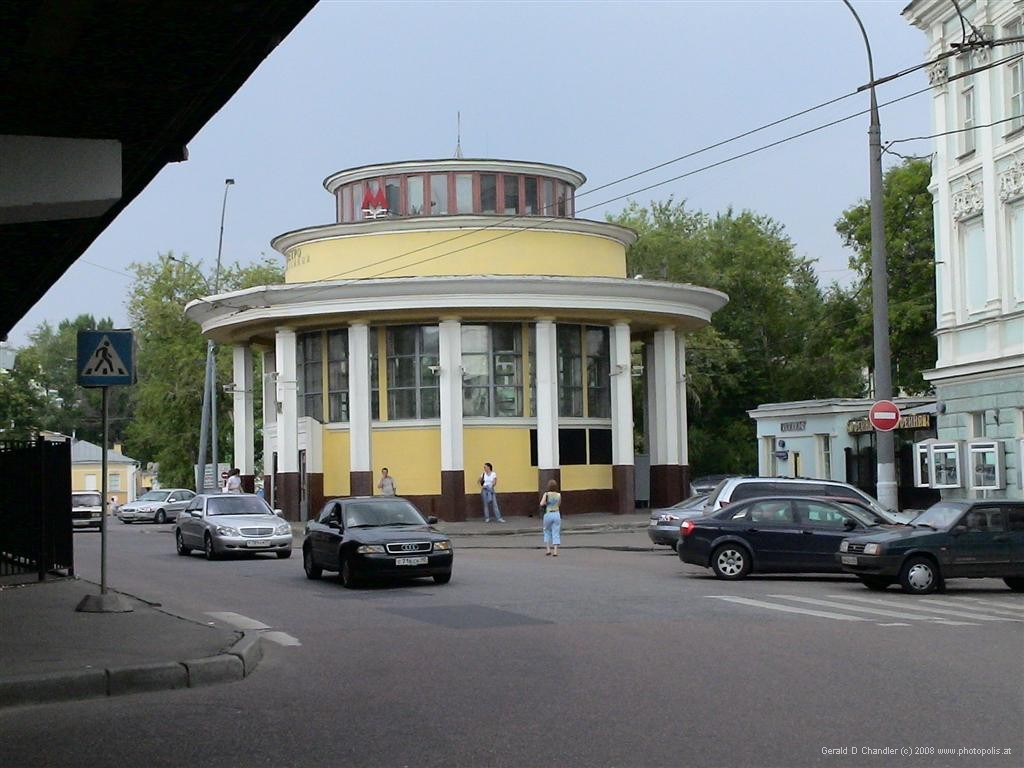
Metro Station |
While the stations may be impressive, the trains are clunky, noisy, and very old-fashioned. They remind one of a pair of shoes that once were the sturdiest around but have been so worn and patched that they are only a shadow of their former glory. They are all the same, and undoubtedly still come out of Locomotive Factory Number 1. Painted a drab military green the wide carriages with bench seats down each side are now brightened up a little inside by colorful advertizements that are very discreet by western standards. No fancy screens like in Berlin to tell you what was going to be on TV tonight and give you extracts from the daily news.
In noise the trains can be rivaled only by the old subways of New York City, fifty years older and still screeching and groaning when metal meets metal. In Moscow, the noise is deafening both on but especially off the train. The noise is accompanied by such shaking and jerking that you have the feeling of traveling very fast but it is just an artifact of the old rails that give you such a bumpy ride.
You can't complain, however, about the frequency with which the trains arrive and depart especially on the big Golden Ring line that intersects with the spoke lines that run out of town to the distant suburbs. Trains arrive about once every two minutes and spend about a minute in the station unloading and reloading passengers. Off the train goes and within a minute or so the next train arrives, disgorges its contents, absorbs the crowd waiting on the platform and races off into the waiting tunnel.
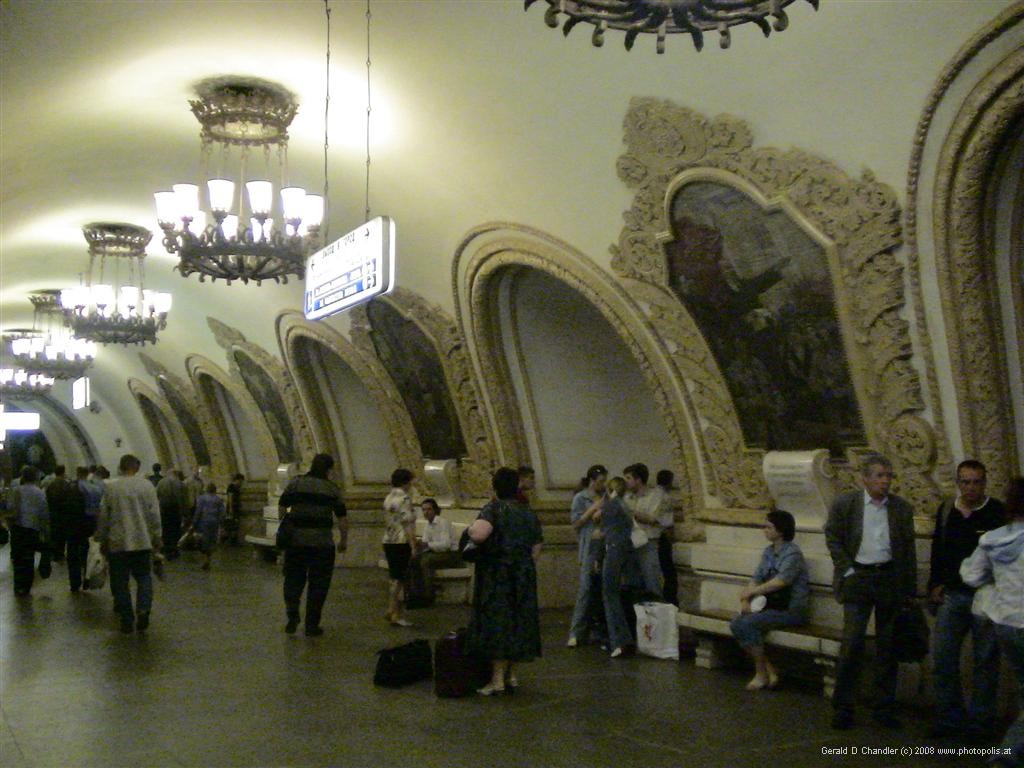
Platform Central Hall
|
All the stations are pretty deep, so they are accessed with deep, deep escalators packed with people almost all day long, but especially so at rush hour. At rush hour getting onto an escalator often involves being part of a shuffling crowd that is narrowed down from a wide corridor to one, or if you are lucky two escalators. At the busiest times, you have no option but to stand all the way down. When it's less busy Muscovites dutifully stand on the right to let those in a hurry trip their way down the wooden slat stairs (just like the London Underground) into the bowels of the earth. Coming out of the metro there are fewer people who choose to walk even when lesser crowds allow, because the climb is pretty stiff. In that respect it reminded us of the metro in Washington D.C. whose steep escalators we regularly climbed puffing and panting all the way.
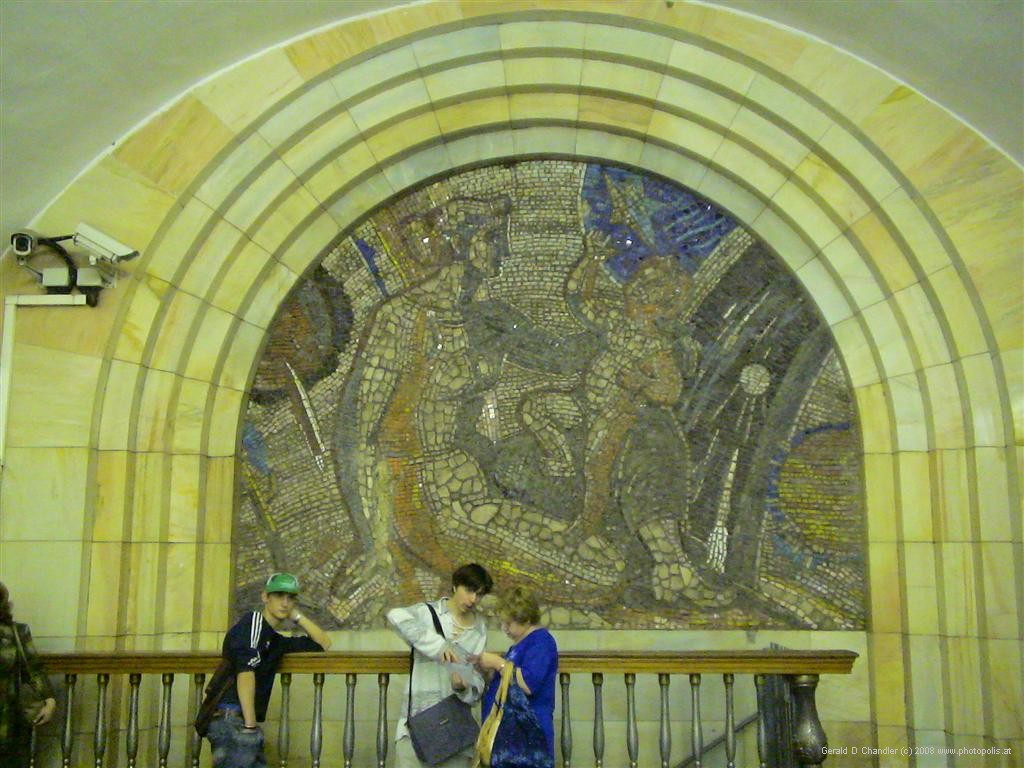
Mosaic at end of a Metro central hall |
Given how many people travel the metro, the passengers are remarkably placid and well-behaved, courteous to one another or at worst tolerant. Perhaps the worst effect of this mass of humanity is one that is pretty much unknown in the west: body odour. Russians often don't have the facilities to have the habit of showering every day. And in Moscow in the summer the centrally-distributed piped hot water gets turned off for up to six weeks just when the metro is at its hottest, stuffiest, and smelliest! So Muscovites either have to heat up water on the stove to take a bath or go visit a friend in a different district and hope that they are on a different schedule. Happily, we never had this problem as the water had been turned off and back on again before we arrived.
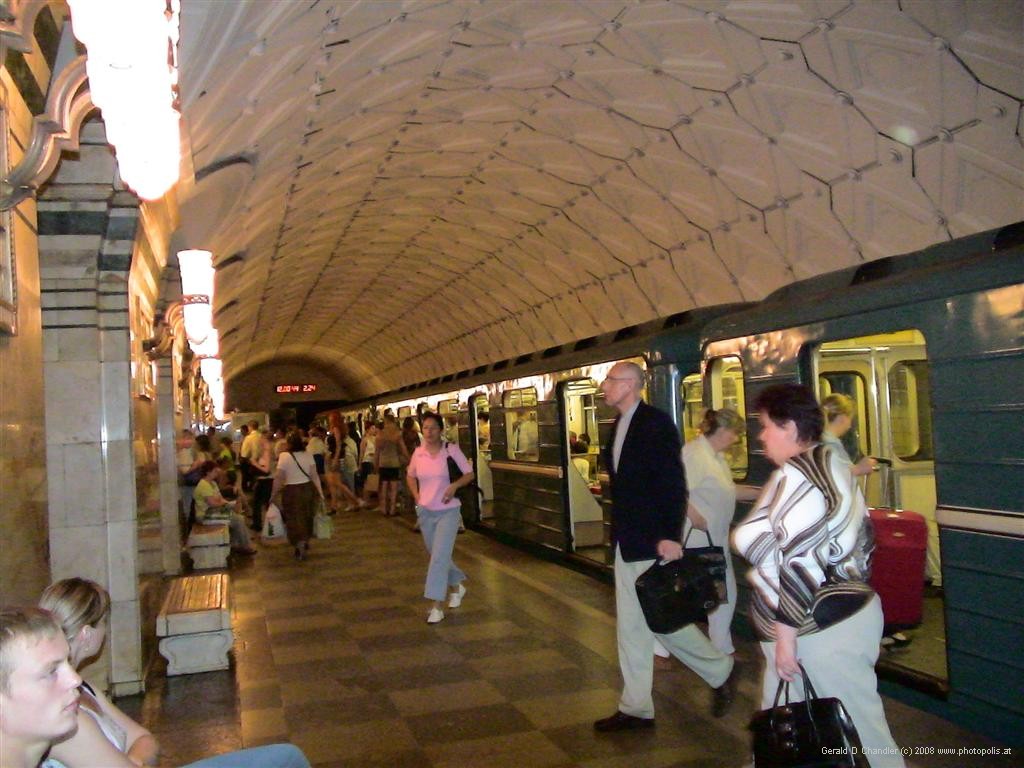
A relatively quiet moment on the metro |
We rode the metro quite a lot but always chose a bus if time and/or route allowed. The metro was fast and except for at rush hours was relatively uncrowded so we chose it when we had to get somewhere by a specific time. We learned that by positioning ourselves at one end or the other of the train we would be almost assured of seats. That of course was in summer when many Muscovites were on vacation. All that changed when the first of September rolled around and everyone came back to work. Then we learned what real crowding meant. No time of day was uncrowded and rush hour was totally unbearable, such a crush of people. Mind you, the bus was also more crowded and slower than ever because more cars were on the road and so the traffic jams were horrendous. Luckily for us, it was soon afterwards that we left Moscow for the quieter towns of the Golden Ring.